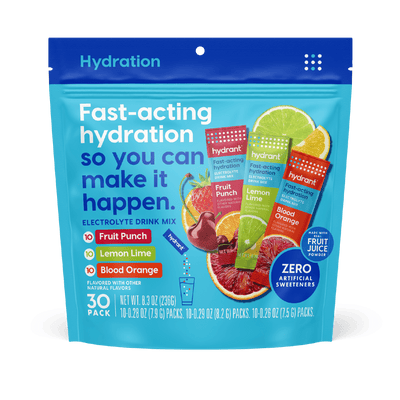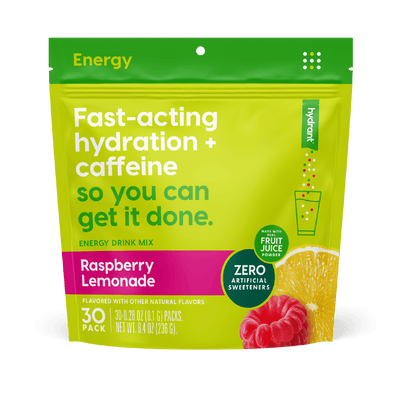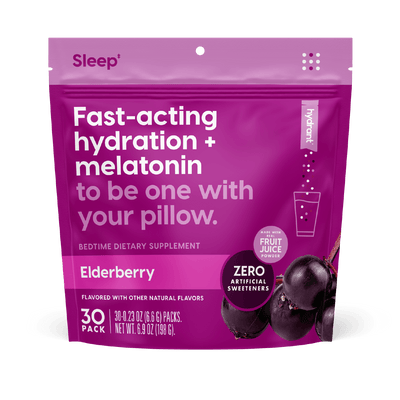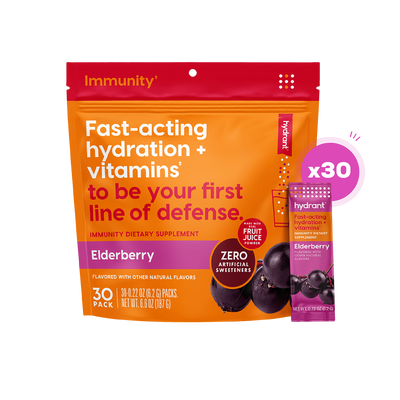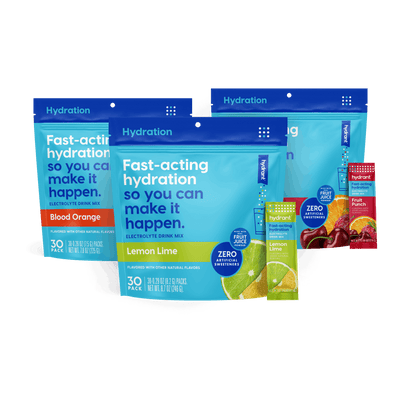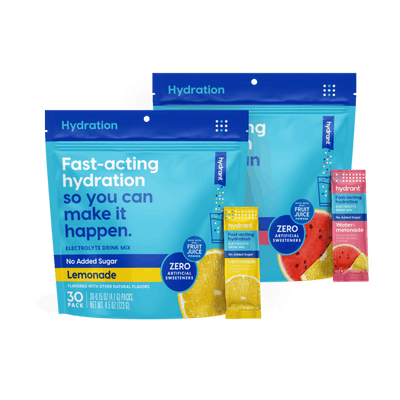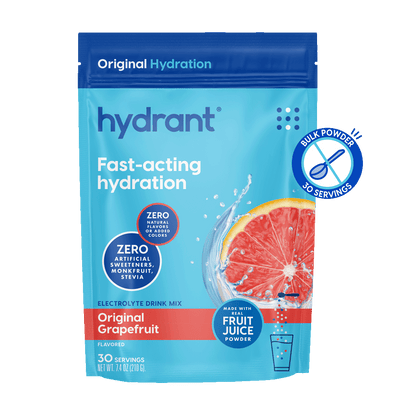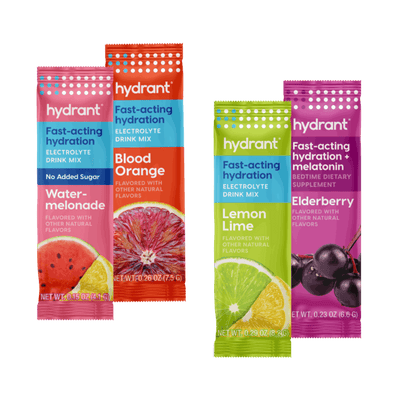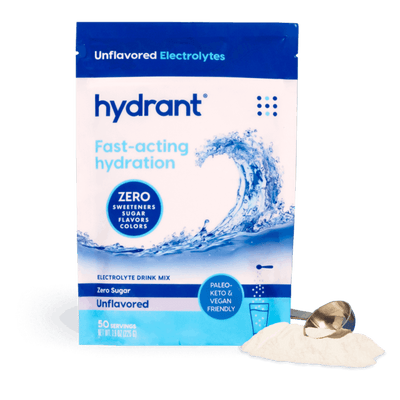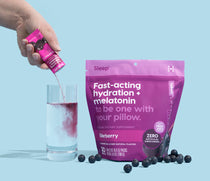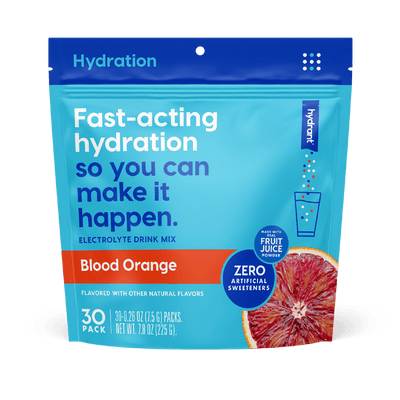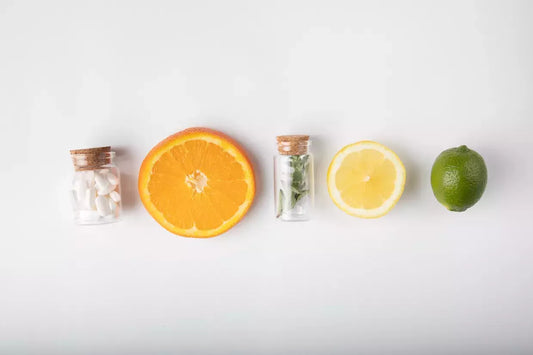Anywhere from 15-40 percent of people traveling at high altitudes (above 8,000 feet) may experience “altitude sickness” [1]. If you’re visiting or even moving to somewhere with a high altitude, like Leadville, Colorado (elevation 10,152 feet) or Brian Head, Utah (elevation 9,800 feet), you might be thinking about dealing with altitude sickness during your stay [2,3].
Read on to learn everything you need to know about altitude sickness, including the ways in which hydration can help you proactively manage it.
What Is Altitude Sickness?
Sometimes referred to as “elevation sickness” or “mountain sickness,” altitude sickness is a colloquial name for a condition that can affect people when they reach elevations of 8,000 feet or higher. Altitude sickness occurs because, at higher elevations, the barometric pressure changes. This means there’s less oxygen available.
Types of Altitude Sickness
Most people who deal with altitude sickness will likely develop symptoms within 8-36 hours after reaching a higher elevation. There are three types of altitude sickness, each with unique symptoms [4]:
Acute Mountain Sickness
This is the most common form of altitude sickness. It’s also the mildest. Someone experiencing Acute Mountain Sickness may notice the following symptoms:
- Headache (that doesn’t get better with over-the-counter medicine)
- Nausea
- Vomiting
- Dizziness
- Weakness
- Fatigue
- Difficulty sleeping
- Decreased appetite
High-Altitude Cerebral Edema
This is a more extreme form of acute mountain sickness that results from low oxygen affecting the brain. If symptoms of acute mountain sickness progress, high-altitude cerebral edema may occur.
High-altitude cerebral edema is characterized by these symptoms [4]:
- Worsening headache
- Worsened vomiting
- Walking with a stagger
- Confusion
- Exhaustion
- Hallucinations
- Changes in cognitive ability
- Changes in behavior
High-Altitude Pulmonary Edema
High-altitude pulmonary edema affects the lungs. It may or may not accompany symptoms of other types of altitude sickness. This type of sickness occurs because low oxygen triggers the constriction of blood vessels in the lungs. This results in increased pressure in the arteries of the lungs, which can causes fluid to leak into the lungs.

Symptoms of high-altitude pulmonary edema most often show up at night and get worse during exertion. The following are some of the most common symptoms [5]:
- Chest tightness
- Extreme fatigue
- Difficulty catching breath, even when at rest
- Lips or fingernails turning blue or gray
- Coughing
- Producing a pink, frothy fluid when coughing
- Above-normal fever (still less than 101° Fahrenheit)
- Making rattling or gurgling noises while breathing
High-altitude retinal hemorrhage can also occur. The primary symptom of this issue is blurred vision [5].
Things to Keep in Mind
Anyone can experience altitude sickness. However, some people are more likely to deal with it than others. The following might be some factors that allow some people to experience more symptoms than others [6]:
- Rapid ascent (climbing to a high altitude too quickly)
- Strenuous exertion (pushing yourself too hard, too fast)
- History of altitude sickness
- Living at a low altitude
If you have one or more of these risk factors, that doesn’t mean you can’t have adventures at higher altitudes. You’ll just need to be more cautious when planning and preparing for your excursion.
Altitude Sickness and Dehydration
Higher altitudes also can increase your risk of becoming dehydrated. Here are some of the primary reasons why this happens:
Less Water in the Air
At higher elevations, the air is drier. This causes you to lose moisture faster through various parts of the body, including the lungs, nose, and eyes. Dry air causes your sweat to dry faster, too. It might even dry before you realize that you’ve been sweating (and, by default, losing fluids and electrolytes).
Increased Breathing Rate
When you breathe faster and harder, you lose more water. An increased breathing rate is common at higher altitudes because there isn’t as much oxygen in the air as there is at lower elevations.
Increased Urine Output
Higher elevations can cause you to urinate more frequently. Every time you urinate, you lose fluids, and it’s important to be diligent about replacing them.
Suppressed Thirst
High altitudes and cold temperatures suppress thirst. You might find that you don’t feel as thirsty as you do at lower elevations when the temperature is warmer, which can lead to you drinking less than is necessary.
Does Dehydration Cause Altitude Sickness?
Dehydration does not cause altitude sickness. If you’re well-hydrated, you can still experience altitude sickness while hiking, skiing, or doing other activities at a higher elevation.
It’s still important to monitor your hydration when you’re at a high altitude, though.

Mild altitude sickness and dehydration share a lot of the same symptoms (headaches, nausea, dizziness, fatigue, etc.). Because of this, a lot of people assume that they’re only dehydrated when they’re actually dealing with elevation sickness.
If you’re keeping up with your hydration and start to feel symptoms like those listed above, you can be more certain that it’s actual altitude sickness that you’re dealing with. You’ll be able to descend to a lower elevation quickly and minimize the risk of experiencing a more severe, potentially life-threatening health issue.
How to Proactively Hydrate at High-Altitudes
You now know more about how serious altitude sickness and dehydration can be. With this information in mind, it’s important to keep proactive hydration while at higher altitudes.
The following are some suggestions to help keep your body hydrated:
Drink Plenty of Water
Make sure you’re drinking plenty of water leading up to your big excursion. If you’re already dehydrated when you arrive at your destination and start your climb, you’ll be more likely to deal with symptoms once you start exerting yourself.
Limit Dehydrating Drinks
Drink water and steer clear of drinks that might dehydrate you. This includes alcohol, which is a diuretic, as well as drinks with high levels of caffeine, too. Too much caffeine can also have a diuretic effect, especially if you’re drinking a lot of it without adequate water and electrolytes.
Increase Your Electrolytes Intake
Speaking of electrolytes, make sure you’re upping your intake of these essential minerals before and during your high-elevation adventures.

Minerals like potassium, sodium, and magnesium will help to increase and keep your body optimally hydrated to stay ahead of dehydration. For easy access to them while you’re traveling, keep some hydration drink mix packets on hand to add to your water for an electrolyte (and flavor) boost.
Be Proactive
Make sure you’re drinking water periodically during your outdoor activities, too. Keep water and electrolytes on hand so you can drink at regular intervals. This can help keep you from getting too thirsty or accidentally becoming dehydrated.
Gradually Increase Exertion
Of all the risk factors associated with altitude sickness, rapid ascent and strenuous exertion are the two that you have the most control over.
Start slow and don’t push yourself too far when you’re just getting started. Give your body time to adjust and get acclimated.
What to Do if You Experience Elevation Sickness Symptoms
No matter how prepared you are, there’s still always a chance that you may experience elevation sickness symptoms. Here are some suggestions to help you if you start to experience symptoms of elevation sickness:
Stop and Rest
First, if you experience symptoms of altitude sickness, stop and rest for a minute. Don’t try and power through. Take a break to assess the situation.
Don’t Climbing Higher
Resist the urge to climb higher, even if your symptoms start to subside. Altitude sickness isn’t something you want to mess around with.
Wait at least 24-48 hours before you push yourself to get to a higher elevation. If you don’t feel better by this point, descend to a lower elevation [7].
Hydrate
During your break, drink water and add in some electrolytes, too. This can help you figure out if your symptoms are related to dehydration or altitude sickness. Plus, it doesn’t hurt to get some extra fluids in, either.
Shield Yourself from Altitude Sickness Today

Altitude sickness can affect anyone who’s spending time at a higher elevation than they’re used to. If you’re going to be traveling to a high altitude, especially if you have plans to exercise in that location, it’s important to be informed before you leave.
Knowing what to expect and how to reduce your chances of dealing with altitude sickness will allow you to stay safe, stay healthy, and have a positive experience. Keep these suggestions in mind so you can have a great adventure.
